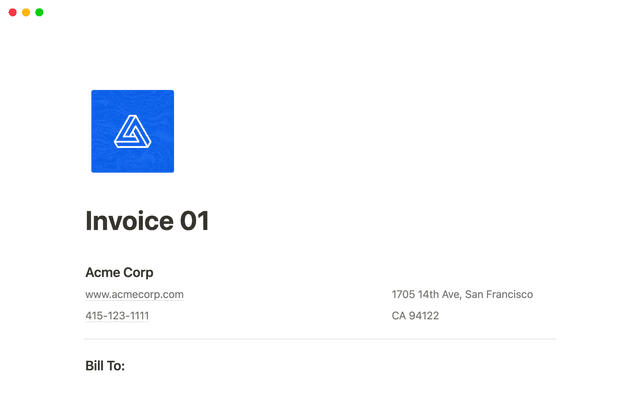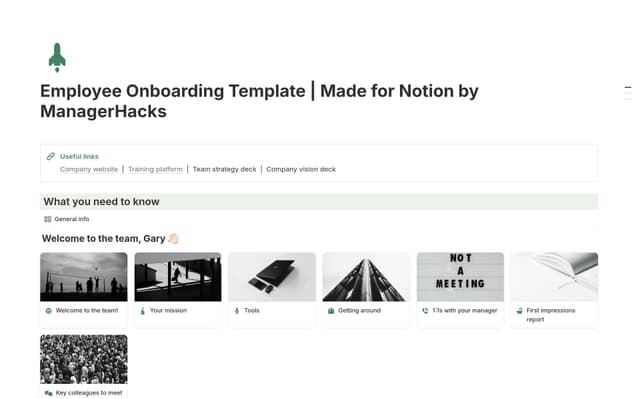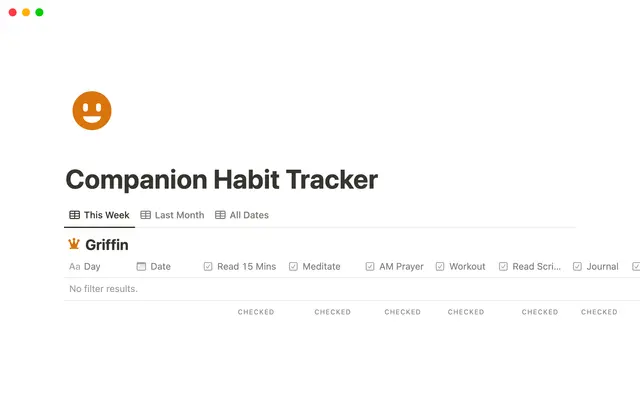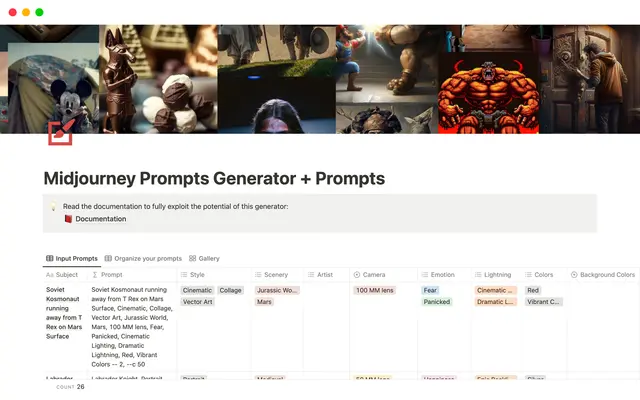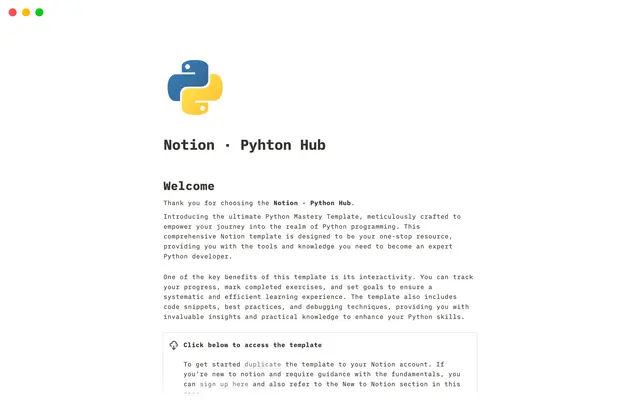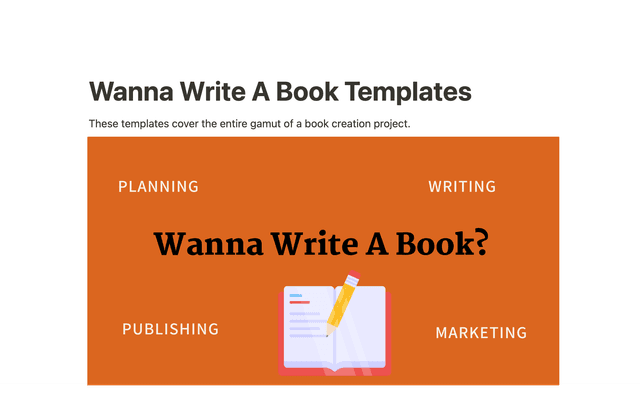Break tasks into manageable steps with sub-tasks and dependencies
Sub-tasks and dependencies show how all the pieces of your tasks and projects connect. You can scope out tasks, assign individual steps to your team members, and identify anything blocking your progress.
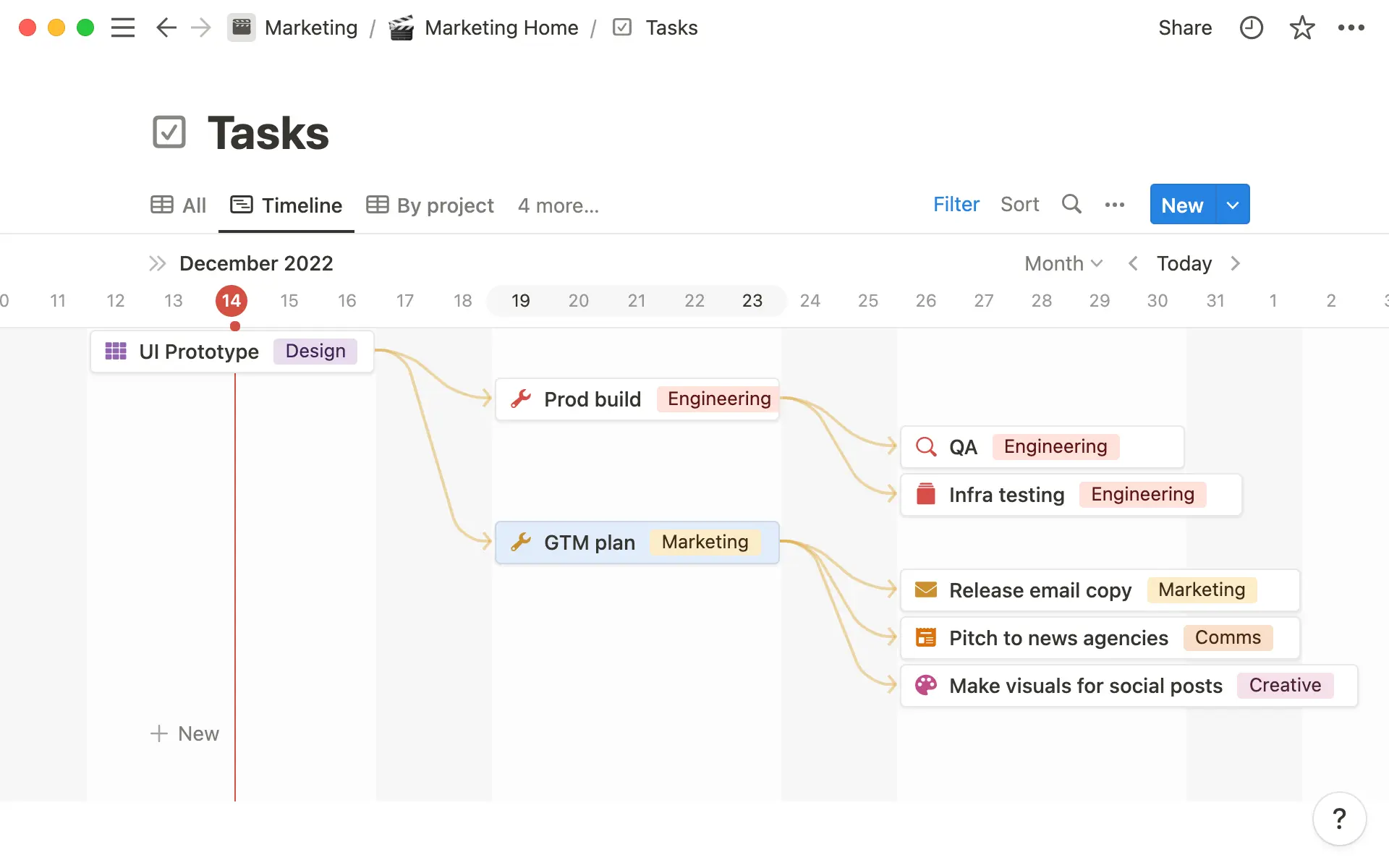
- How to use sub-tasks in your tasks database
- How to use dependencies in timeline view
- Sub-tasks and dependencies make it easier to manage your team’s work
- Ways to view subtasks and dependencies in a page
- You can use database sub-items in many different ways
When managing a busy team, your task database can become chaotic. Some tasks are quick and easy to complete, while others have a much broader scope and require many steps. Having all these tasks side by side gets confusing, and it’s hard to move forward when you’re unsure of what comes next.
If you find yourself with more than 50 rows in your tasks database, sub-tasks and dependencies can help you get a clearer picture of exactly what needs to get done by breaking big tasks down into smaller actions.
It’s easier to scope out the steps to complete a task, share the workload amongst your team by assigning specific steps to different team members, and define what needs to happen for a task to be marked “complete”.
You’ll quickly spot any tasks that are blocking your progress and need to get done before anything else.
Sub-tasks and dependencies are built using Notion’s relations properties. In this guide, we’ll explain how to easily get set up and use sub-tasks and dependencies for task management.
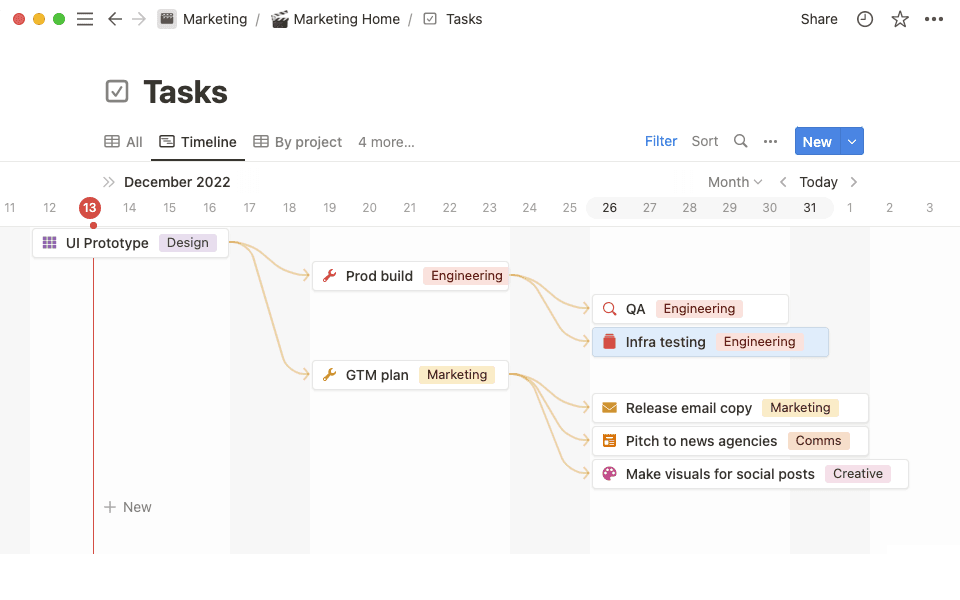

What are relation properties?
Publishing content like a blog post might sound like a straightforward task, but as marketing teams will know, there are many steps involved, from initial research and outlining to drafting and reviewing. It probably requires input from two or more team members, and even after publishing your post, you’ll have a bunch more tasks to distribute and promote it.
Let’s say you add a task to your database called “Publish ‘10 Ways to Use AI in Marketing’ blog post”. You can make this a parent task in your database, then create sub-tasks to research the topic, outline the post, write the draft, submit it for editing, review and publish.
Some of those tasks might even have their own sub-tasks. For example, publishing the post might involve a final review and SEO check, formatting, adding images, writing a meta description, and uploading to your CMS.
Here’s how to create a sub-item property in your tasks database:
Click on the
…menu in the top right of the database, and selectSub-items.In the
Sub-itemswindow, you’ll create a self-relating property. You can rename the properties to “Sub-tasks” and “Parent tasks”.Select
Create.
Now, you’ll see two new properties in the database, one for “Parent tasks” and one for “Sub-tasks”.
Any task in your database can have sub-tasks, which can be further broken down into smaller sub-tasks.
To add sub-tasks to any item in the database, just hover over, click the drop-down that appears and add as many sub-tasks as you need. Sub-tasks can be viewed in both table and timeline views.
Use dependencies to mark a task as dependent on another.
For example, imagine you’re working on a new feature launch. The order you complete tasks is important, as you can’t start publishing guides and email content until you’ve finalized the UI.
You could use dependencies in a timeline view to flag tasks that need to be completed before you move on to the next. This functions in much the same way as sub-items and is just another way to visually connect your work.
To add dependencies in timeline view:
Go to the
…menu and click onDependencies.If no relation exists in the database, you’ll be prompted to create one. By default, it will be a self-relation called
Dependencies.You can then choose whether to show dependencies by parent or sub-task.
Click
Create new relation.
When you hover over any database item in your timeline, an arrow will appear on the right side. You can click on the arrow and drag it to connect one task with another to create a dependency which will appear only in a timeline view.
When you’re managing a fast-moving team, prioritizing and tracking everyone’s work is a major challenge. With sub-tasks and dependencies, you can juggle your team’s daily work while simultaneously making progress towards larger objectives.
Sub-tasks and dependencies help you:
Break tasks into sub-tasks — Many tasks in your task database are too broad to complete in one step, and actually require multiple actions, from more than one team member. Breaking these large tasks down into individual steps makes it easier to set out and accomplish what needs to get done.
Help team members collaborate to get tasks done — Once you’ve broken a task down into its individual sub-tasks, you can then delegate or assign those smaller tasks to different members of your team. This helps your team collaborate, with everyone doing their part to reach your objectives.
Identify blockers halting your progress — Sometimes progress is stalled because you can’t move ahead until a certain task is complete. Dependencies make it obvious when this is happening, so you can prioritize getting it done and move on.
When you open a page in a database, you can view sub-items and dependencies as a relation at the top of the page.
Alternatively, you can choose to show sub-items as a page section, so when you open up a task, it’s immediately clear what all the subtasks are. In the sub-item section, you can click on the options menu … and select which corresponding properties you want to display (status, assignee, due date, etc.) Having sub-tasks show up as a separate page section also makes it easy to add new tasks to the page.
Sub-tasks and dependencies are primarily designed with task and project management in mind.
However, you can use these properties for anything you need.
For example:
Divide your OKRs into mini-goals — Create a sub-item property inside your company’s OKR database, and rename it to “Sub-goals” or “Mini-goals”. Then, you can add smaller goals that will add up to your overarching monthly, quarterly or annual goals.
Create parent teams and child teams in an org chart — You can use a sub-item property to create an org chart database, where you can see how each larger department is divided into smaller teams.
Record monthly and weekly updates in your docs database — Monthly update documents can become your parent items, with each weekly update a sub-item for the relevant month.
¿Hay algo que no hayamos abordado?
